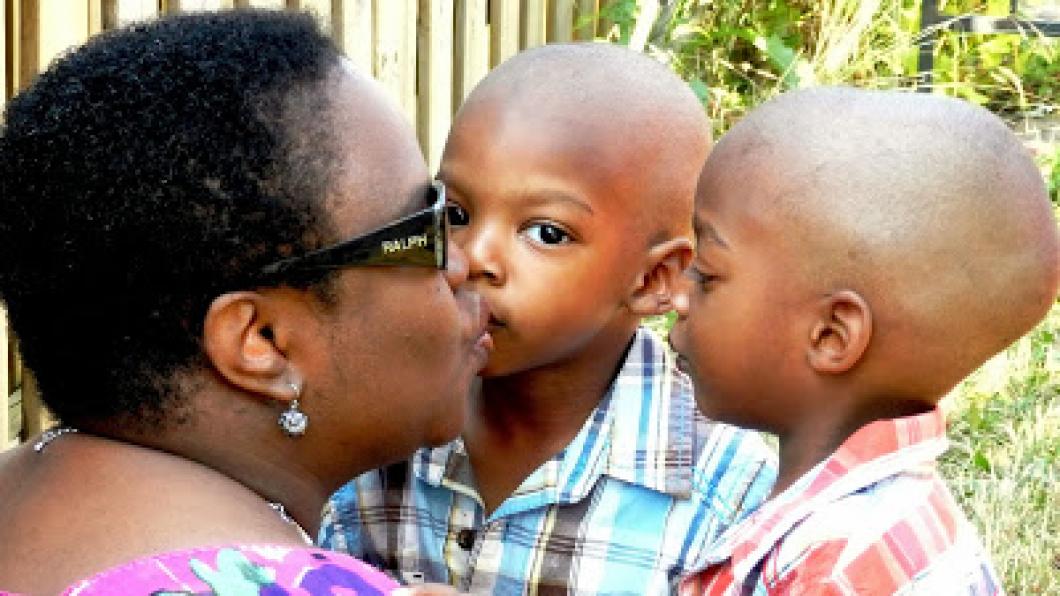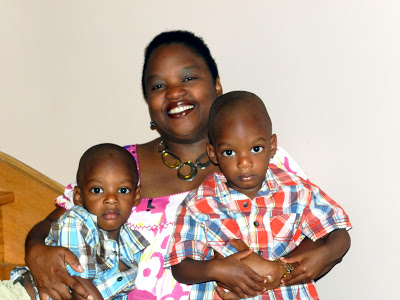
Let's find the missing 'family-centred' pieces
By Jacqui Getfield
Recently, I attended two events about family-centred care. I learned a lot but came away with conflicting emotions. I was intrigued and happy yet also very concerned. The conferences confirmed a suspicion that I’ve held since I first received my children’s diagnosis: professionals tend to ignore the influence of a family’s culture, structure and finances on its ability to care for a child with disabilities.
Most of the presenters seemed to avoid talking about the “social” or “cultural” factors that I believe must be taken into account with any “medical” or “clinical” considerations of the child and family. I kept wondering how is it that the “social” considerations were being ignored when the family is a clear social construction? This was very troubling, for me.
I’m the mother of twins who are challenged with what it means to live on the autism spectrum. I’m also an immigrant from Jamaica. Over the past three years, I’ve been puzzled by the expectations of some healthcare professionals.
When my boys were younger, therapists couldn’t understand why I wasn’t overly concerned about their social development.
I told them to consider a few things in my experience:
In my Jamaican culture, children, especially young boys, develop much later than girls. In Jamaica, it’s not uncommon for boys’ speech to be somewhat delayed until they’re four- to six-years old. And since my boys were born prematurely and are twins it makes the expectation for speech different from if they were singletons born full-term. Their ear, nose and throat (ENT) specialist, their pediatrician and other moms of multiples allayed any fears I may have had: they said delayed speech is not uncommon for multiples. And, everyone reminded me that each child develops at their own pace.
Further, I expected my children to pick up speech in our single-parent family with no older siblings more slowly than they might in a house with two or more adults plus older children. In the latter, it would be quite normal for toddlers to hear and organically absorb the spoken language that takes place almost constantly.
In my culture, Jamaican mothers do not carry on incessant, “irrelevant” chatter with children who themselves can’t speak. As for mothers conducting “pretend play” sessions and arranging play dates, that was unheard of—as though working mothers didn’t have enough to do!
Playing with other children is another area where immigrant families may have different expectations from the mainstream. While in both countries it is typical for young children to play with each other, in Jamaica there’s been comparatively less emphasis on pre-school or daycare and parents certainly don’t organize play dates. So there aren’t the same opportunities for socializing among children who aren’t related.
Young children in my culture play mostly with siblings or relatives or with their toys in their own homes. Older children may play with others in the neighbourhood in their own backyards, on the street or elsewhere. But for certain, these are not arranged play dates where parents are hovering in sight and earshot.
Parents in my culture may not notice a child is developmentally delayed until after they start school. It is during the early years of primary school—when children are between six and nine years old—that a parent first learns about their child’s disability from a teacher in Jamaica.
There has been very little emphasis on “learning through play” in Jamaican primary schools. Play is an informal activity between and among children. Adults are not expected to be integrally involved in unstructured free play—in or outside of school—which is the way things were in Canada just a couple of generations ago! Today in North America the mainstream parenting style has earned us the name “helicopter” parents since we feel compelled to hover.
When my children were not making eye contact at two years old, I simply didn’t think it was important. Personally, I didn’t become aware of the cultural importance of eye contact as a means of communication until I arrived in Canada.
Until recently, I have always thought this “eye contact” was an expectation among adults, only. Among immigrants, there are different cultural expectations regarding the observance of critical milestones such as eye contact. In Canada, in some immigrant households, making eye-to-eye contact is a social “no-no” especially for children. This may imply that you are being confrontational or not showing respect to someone in authority.
Over the past two years, since my sons’ diagnosis, I have come to understand fully that milestones are monitored extremely closely in Canada and if my children don’t meet these established milestones, they will be even less advantaged.So, these days I make the effort to determine the developmental milestones they must meet.
There are so many things that are different in Jamaica and Canada, even though they both share a common colonizing history. In my opinion, not only is it common sense for health professionals to be more mindful of the cultural realities of the families they see, but they need to consider the social and economic, as well.
Consider family A, headed by the low-income, less-advantaged mother who is an immigrant; who speaks English as a second language; who parents not one child with disability, but two; and who herself has a learning disability.
Now consider family B, headed by two non-disabled parents who are middle-class, non-immigrants, working professionals supported by a nanny and grandparents.
Shouldn’t family-centred care look remarkably different for each of these families?
Simple but important things can be barriers to family A. Things like transportation to therapy appointments; not being able to afford adapted equipment or to hire a babysitter; not being able to understand a hand-out about home therapy that’s written in English using clinical words; and not being confident enough to engage or communicate fully and openly with those in authority.
Similarly, some mothers may not offer their opinions regarding the care or treatment of their children without first consulting their husbands and older females for their input or “buy-in.”For example, in some cultures decisions regarding whether or not to diagnose and subsequently “label” a child, are life-changing decisions that are not to be made on the spot by a younger “less empowered” female.
Not only does Family A not have the financial and people resources that Family B has, but many immigrant parents are afraid to speak out. In some cultures it is certainly not acceptable to appear to oppose, criticize or speak out against those in authority. Most immigrant mothers from the developing world, regardless of culture, have not been taught how to advocate nor have they been taught that it is okay to advocate. They may fear that asking for services or changes in how services are delivered will negatively impact their child’s care because the authority figures may disagree and take it out on the children, passive-aggressively or overtly!
So in my opinion, for effective implementation of family-centred care, institutions must work closely with families and they must invite parents to share the cultural, social and economic realities of their everyday life. These realities must be part of the “family-centre care” conversation. They are just as important as the child’s medical diagnosis and treatment options because without an understanding of them you can’t have cooperation and true collaboration. These realities are critical to the success of any prescribed care and treatment.

When Jacqui Getfield is not engaged with hersons Jay and Em, she steals time away to provide corporate communications, writing andediting services through her company, Say It Write Communications. To contact Jacqui directly, e-mail jacqui@sayitwrite.ca